American, Russian leaving Earth for year at space station
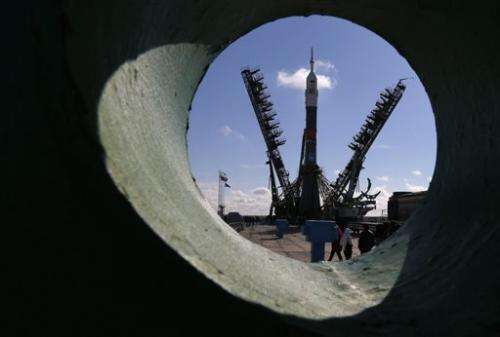
An American astronaut and Russian cosmonaut will leave Earth this week and move into the International Space Station for an entire year, all in the name of science.
Scott Kelly and Mikhail Kornienko begin their marathon mission with a Soyuz rocket launch from Kazakhstan early Saturday—Friday in the U.S. They should arrive at the orbiting outpost six hours later.
It will be NASA's first stab at a one-year spaceflight, a predecessor for Mars expeditions that would last two to three times as long. The Russians are old hands at this, but it's been nearly two decades since a cosmonaut has spent close to a year in orbit.
Five things to know about the duo's extraordinary endeavor:
THE CREW
Both Scott Kelly and Mikhail Kornienko have lived on the space station before. No-nonsense former military men, they were selected as an astronaut and cosmonaut in the 1990s. Kelly, 51, is a retired Navy captain and former space shuttle commander. Kornienko, 54, is a former paratrooper. The pair will blast off with Russian Gennady Padalka, a veteran spaceman who will spend six months at the orbiting lab.
THE MISSION
Kelly and Kornienko will remain on board until next March. During that time, they will undergo extensive medical experiments, and prepare the station for the anticipated 2017 arrival of new U.S. commercial crew capsules. That means a series of spacewalks for Kelly. They also will oversee the comings and goings of numerous cargo ships, as well as other Russian-launched crews. Soprano superstar Sarah Brightman will stop by as a space tourist in September.
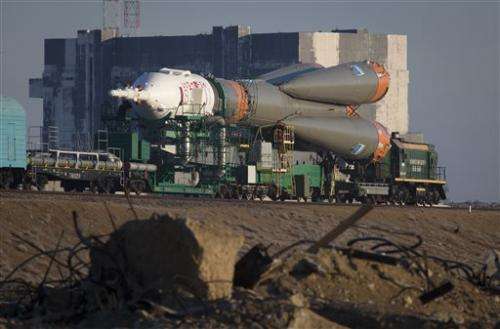
THE SCIENCE
Doctors are eager to learn what happens to Kelly and Kornienko once they surpass the usual six-month stay for space station residents. Bones and muscles weaken in weightlessness, as does the immune system. Body fluids also shift into the head when gravity is absent, and that puts pressure on the brain and the eyes, impairing vision for some astronauts in space. Might these afflictions peter out after six months, hold steady or ramp up? That's what researchers want to find out so they can protect Mars-bound crews in the decades ahead.
THE TWINS
NASA's scientists couldn't resist when Kelly's identical twin brother, Mark, a retired astronaut, agreed to take part in many of the same medical experiments as his orbiting sibling. Researchers are eager to see how the space body compares with its genetic double on the ground. They won't follow the same diet or exercise regime, however. Mark, who's married to former congresswoman Gabrielle Giffords, said he has no intentions of consuming bland space-type food or working out and running two hours a day on a treadmill, as his brother will be doing.
THE HISTORY
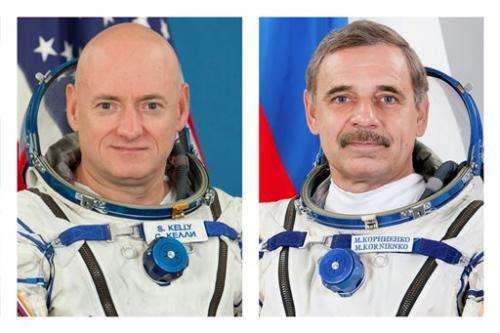
NASA and the Russian Space Agency announced Kelly and Kornienko as the one-year crew in late 2012. This will be new territory for NASA, which has never flown anyone longer than seven consecutive months. The Russians hold the world record of 14 months, set by a physician-cosmonaut aboard the former Mir station in 1994-1995. Several other Russians spent between eight and 12 months at Mir. All but one of those long-timers are still alive.
-
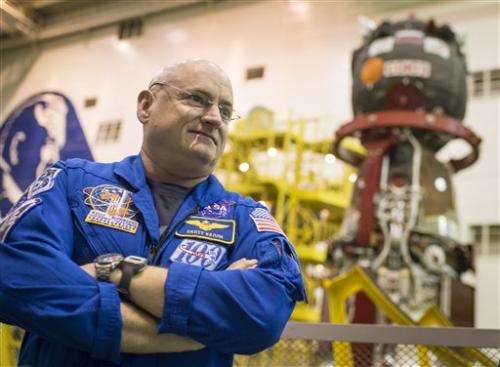
In this photo provided by NASA, Expedition 43 NASA Astronaut Scott Kelly waits to climb the scaffolding to access the Soyuz TMA-16M spacecraft for his final check with fellow crew members Russian Cosmonauts Gennady Padalka, and Mikhail Kornienko of the Russian Federal Space Agency (Roscosmos), on Monday, March 23, 2015, at the Baikonur Cosmodrome in Kazakhstan. On Saturday, March 28, 2015, Kelly and cosmonaut Kornienko will travel to the International Space Station to begin a year-long mission living in orbit. (AP Photo/NASA, Bill Ingalls) -

In this photo provided by NASA, Expedition 43 Russian Cosmonaut Mikhail Kornienko, of the Russian Federal Space Agency (Roscosmos), gets his hair cut at the Cosmonaut Hotel, on Wednesday, March 25, 2015, at the Baikonur Cosmodrome in Kazakhstan. Kornienko, NASA astronaut Scott Kelly, and Russian cosmonaut Gennady Padalka are scheduled to launch to the International Space Station in the Soyuz TMA-16M spacecraft, on Saturday, March 28. (AP Photo/NASA, Bill Ingalls) -
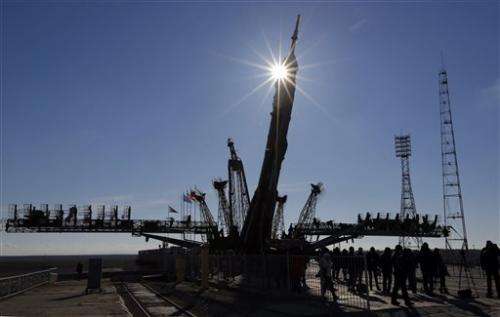
Russia's Soyuz-FG booster rocket with the space capsule Soyuz TMA-16M that will carry a new crew to the International Space Station (ISS) is fixed to the launch pad after arriving from a hangar in Russian leased Baikonur cosmodrome, Kazakhstan, Wednesday, March 25, 2015. The new Soyuz mission is scheduled on Saturday, March 28. (AP Photo/Dmitry Lovetsky) -
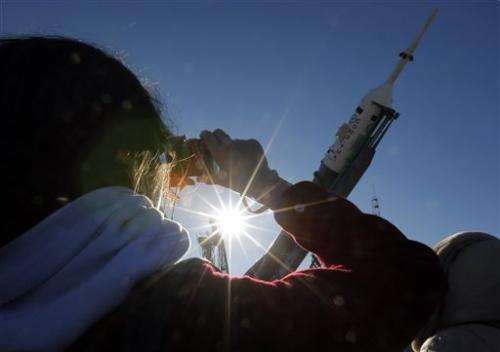
A woman takes a photo of Russia's Soyuz-FG booster rocket with the space capsule Soyuz TMA-16M that will carry a new crew to the International Space Station (ISS), in Russian leased Baikonur cosmodrome, Kazakhstan, Wednesday, March 25, 2015. The new Soyuz mission is scheduled on Saturday, March 28. (AP Photo/Dmitry Lovetsky)
More information: NASA: www.nasa.gov/content/one-year-crew/
© 2015 The Associated Press. All rights reserved.





















